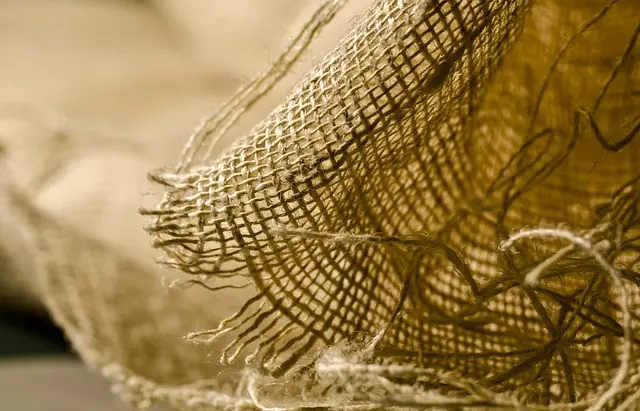Red Borneo Kratom capsules are a preferred method for consuming this plant due to its sedative and pain-relieving effects. These capsules contain alkaloids like mitraphylline and 7-hydroxymitragynine, which are known for their analgesic properties. Growing Red Borneo Kratom requires precise conditions to replicate its Southeast Asian environment, with a focus on soil pH, sunlight, moisture, and humidity. The cultivation process is detailed here, providing insights for those interested in sustainable farming, personal production, or research purposes. It involves careful germination and propagation, consistent watering, meticulous fertilization, selective pruning to enhance alkaloid concentrations, and regulated environmental factors to maintain plant health and maximize alkaloid content. The resulting leaves are dried, ground into powder, and encapsulated for standardized potency, ensuring users experience the wellness benefits of this strain in a consistent and user-friendly form. This comprehensive guide on how to grow kratom plants offers a detailed overview from cultivation to capsulation, emphasizing the importance of each step for producing high-quality Red Borneo Kratom products.
Explore the intricacies of Red Borneo Kratom capsules, a natural botanical with a rich history and potent properties. This article delves into their composition, the myriad effects they offer, and the cultivation process behind these capsules. Gain valuable insights into how to grow Kratom plants, a key step in the production of this herbal supplement. From field to pill, discover the journey of Red Borneo Kratom transformation into a concentrated form, providing a safe and effective option for those seeking its wellness benefits.
- Understanding Red Borneo Kratom Capsules: An Overview of Their Composition and Effects
- The Journey of Kratom Plant Cultivation: Insights on How to Grow Red Borneo Kratom Plants
- Harvesting and Processing Red Borneo Kratom into Capsules: A Step-by-Step Guide
Understanding Red Borneo Kratom Capsules: An Overview of Their Composition and Effects

Red Borneo Kratom Capsules are a popular choice for those seeking the sedative and analgesic properties of kratom, a plant indigenous to Southeast Asia. The capsules contain the leaves of the Mitragyna speciosa tree, which is where kratom originates. Understanding their composition and effects begins with the alkaloids present in the Kratom leaves. These include mitraphylline and 7-hydroxymitragynine, which are believed to contribute to its analgesic and sedative qualities. The capsules offer a convenient way to consume kratom, as they eliminate the need for measuring powder and help maintain consistent dosage.
Growing kratom plants requires specific conditions that mimic their natural environment. These plants thrive in well-drained, humus-rich soil with a pH similar to that of a weak coffee solution, around 5 to 6. They prefer abundant sunlight and consistent moisture without waterlogged conditions. Propagating kratom is often done from seed or cuttings, and it’s essential to monitor the temperature and humidity levels to ensure healthy growth. As with any cultivation endeavor, understanding the local climate and soil composition is key to successfully growing kratom plants. This knowledge can be particularly valuable for those interested in sustainable practices, aiming to produce their own kratom for personal use or for research purposes.
The Journey of Kratom Plant Cultivation: Insights on How to Grow Red Borneo Kratom Plants

Growing Red Borneo Kratom plants is a meticulous process that requires both patience and expertise. The journey begins with selecting the optimal environment, as the plant thrives in conditions that mimic its natural habitat in Southeast Asia. Kratom plants prefer well-drained soil rich in organic matter, a consistent level of humidity, and moderate sunlight. To initiate cultivation, growers often start with seeds or cuttings placed in a nursery setting to ensure they have a strong foundation before transplanting to their final growing location. Regular watering is essential, but care must be taken to avoid over-saturation that could lead to root rot. Fertilization should be done with caution, using balanced fertilizers that support the growth stages of the plant without causing nutrient burn.
As the Red Borneo Kratom plants mature, they require pruning to encourage branching and a denser canopy. This not only promotes healthier plant growth but also increases the alkaloid content, which is the active ingredient sought after by consumers. The alkaloid profile of Red Borneo Kratom is unique and desirable for its pain-relieving and mood-enhancing properties. To maintain optimal conditions, growers must monitor temperature and humidity levels closely, as these factors significantly influence plant vigor and alkaloid concentration. Harvesting should be done with care to preserve the quality of the leaves, which are then dried and encapsulated for consumption. Understanding how to grow Kratom plants like Red Borneo is a complex task that requires dedication and attention to detail, but the reward of producing high-quality Kratom capsules is significant for those committed to this specialized cultivation.
Harvesting and Processing Red Borneo Kratom into Capsules: A Step-by-Step Guide

Kratom (Mitragyna speciosa), native to Southeast Asia, has gained international attention for its potential wellness benefits. Among the many strains, Red Borneo Kratom is particularly popular due to its relaxing and analgesic properties. To harness these benefits in a convenient form, the plant undergoes a meticulous process from harvest to encapsulation.
The journey of Red Borneo Kratom capsules begins with the cultivation of kratom plants. Growing kratom plants requires specific conditions that resemble their natural habitat; they thrive in humid and slightly acidic environments, with abundant sunlight and well-drained soil. Farmers who understand how to grow kratom plants carefully monitor these factors to ensure a robust crop. Once mature, the leaves are handpicked, as mechanical harvesting can damage the delicate plant and affect the quality of the leaves. After harvesting, the leaves are sorted by size and maturity to maintain consistency in potency.
The leaves are then dried to reduce moisture content and preserve their alkaloid profile. This drying process is critical as it influences the effectiveness of the kratom. Following drying, the leaves undergo a grinding process to turn them into a fine powder, which is the form typically used for capsules. The powder is then carefully measured and filled into gelatin or vegetarian capsule shells. These capsules are often standardized for alkaloid content to ensure each dose has a consistent effect. Finally, the capsules are packaged, labeled, and prepared for distribution, providing users with a reliable and potent source of Red Borneo Kratom’s wellness-promoting properties.
Red Borneo Kratom capsules offer a concentrated form of the plant’s alkaloids, providing users with potential benefits for relaxation and pain relief. Understanding the cultivation process of Kratom plants, as detailed in “How to Grow Kratom Plants,” is key to ensuring the quality and efficacy of the final product. From the optimal environmental conditions to precise harvesting and processing techniques outlined in our step-by-step guide, the journey from farm to capsule underscores the meticulous care required to produce a high-quality Red Borneo Kratom. For those interested in exploring the effects or considering cultivation, this article serves as an informative resource, highlighting the significance of sustainable and careful farming practices to achieve the desired outcomes.






